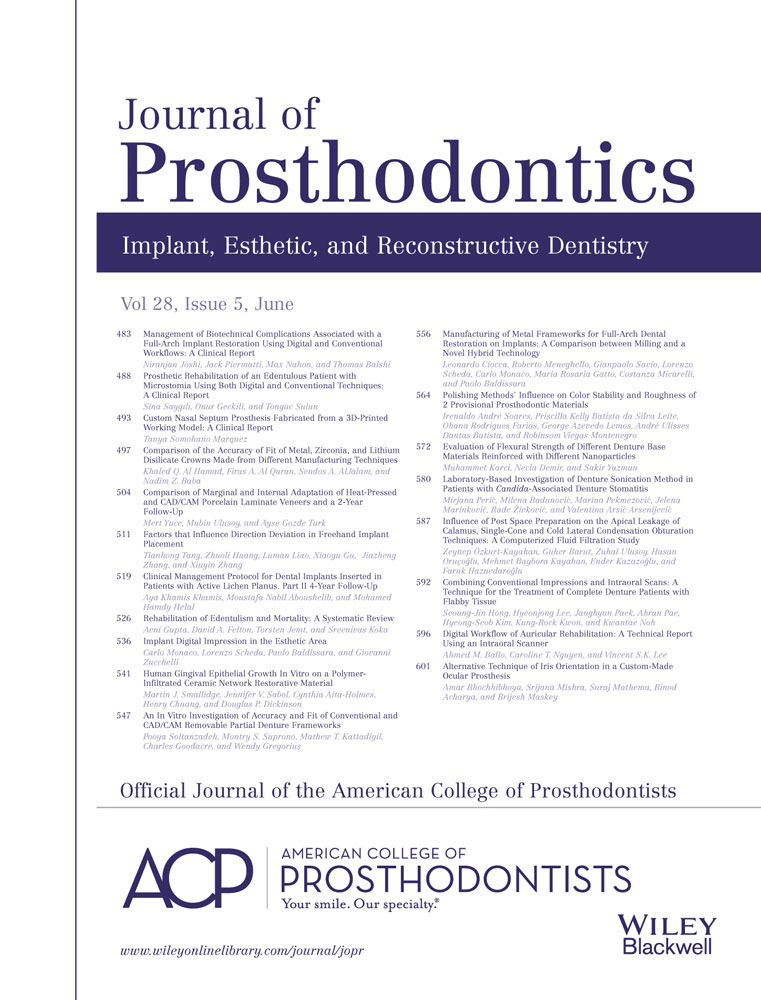Implant Digital Impression in the Esthetic Area
This research did not receive any specific grant from funding agencies in the public, commercial, or not-for-profit sectors. The authors declare that no conflict of interest exists.
Abstract
The aim of this report is to describe two standardized protocols for digital impression when implant support rehabilitation is used in the esthetic area. The two techniques were used to transfer all provisional crown parameters to definitive restorations in different clinical scenarios. In the direct technique, an impression (STL1) is made of the provisional restorations attached to the implants, with surrounding gingival tissue. The second scan (STL2) captures the sulcular aspect of the peri-implant soft tissue immediately after removal of the provisional restoration. The last impression (STL3) of the complete arch is made with a standardized scanbody attached to the implant to capture the 3D location of the implant. The direct technique is indicated when the peri-implant soft tissues are stable upon removal of the provisional restoration. The indirect technique is used when the gingival tissue collapses rapidly after the removal of the provisional crown. The impressions of the provisional restoration and the position of the implant are similar to those obtained with the direct technique, and the shape of the peri-implant tissue is extrapolated from the negative shape obtained from making the digital impression when the provisional restoration is taken out of the mouth. Finally, in both techniques the 3 scans are superimposed to obtain a file, which contains the details of the peri-implant soft tissue. The direct and indirect digital techniques allowed realization of a predictable definitive restoration in the esthetic zone in different clinical scenarios, reducing the duration of clinical procedures.




